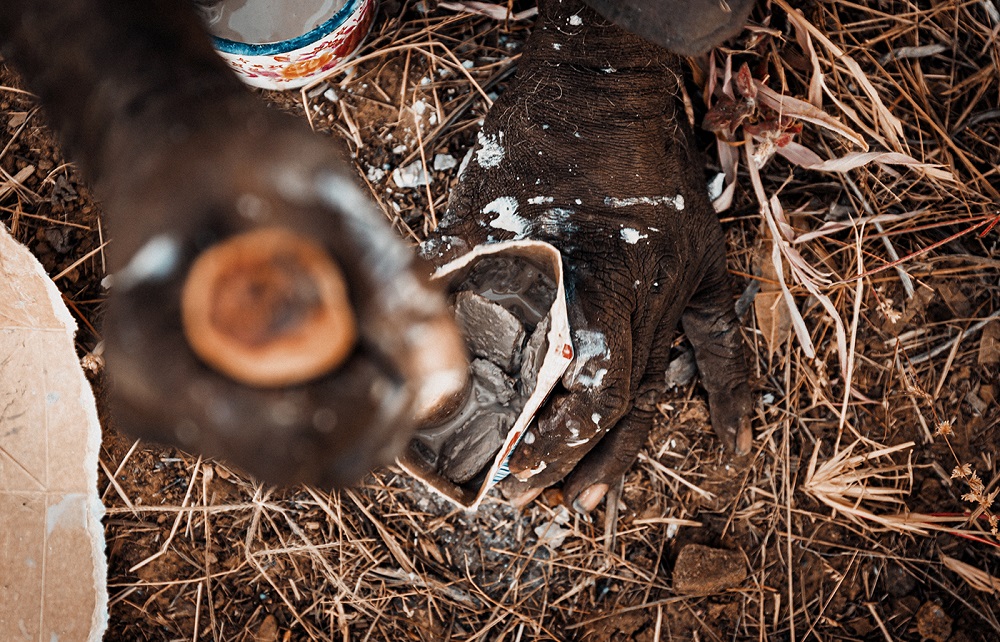- A deep dive into Canon Oceania's sustainability progress and priorities for the future
-
Our social, environmental, and technological challenges are too big, too urgent, and too complex for organisations worldwide to stand still. The window of opportunity to come up with solutions and change the tide is shrinking — inaction is no longer an option.
At Canon, we understand, accept and embrace our responsibility to help create a sustainable future for the people we serve and the planet we rely on.
Creating a sustainable future is not something any of us can do alone. It needs to be a global collaborative effort between communities, businesses, government, investors, and NGOs — we all have a part to play in building the future we want.
At Canon, we bring our collaborative spirit to everything we do. It’s reflected in our corporate philosophy, kyosei,which underscores our commitment to working together for the common good.
To ensure we’re always prioritising the right goals and actions on the path to building an environmentally, socially and economically sustainable business, Canon Oceania conducts a comprehensive materiality assessment* every three to four years — an exercise involving analysing megatrends and engaging stakeholders to identify the most significant sustainability issues for Canon.
In 2022, we partnered with sustainability consultancy BWD on our materiality assessment and the ensuing Sustainability Report 2022. We pinpointed six material issues with the greatest potential to impact our future sustainability. Material issues are those issues where Canon has the most impact on our local economy, environment and people and which are important enough to influence our stakeholders’ future decision making in how they engage with us. We also related our material issues to the United Nations Sustainable Development Goals (SDGs).

Decarbonisation has become one of the most important megatrends to emerge in recent years — both in recognition of the risks arising from global warming and the opportunities available from new decarbonisation strategies and emerging technologies.
At Canon, we appreciate we have a responsibility to reduce our direct and supply chain emissions, and help the broader society move towards net zero. Globally Canon has committed to achieve net zero emissions by 2050 and 50% reduction in emissions by 2030 compared to 2008. In Oceania we have achieved Net Zero certification for Canon New Zealand and are working towards a Net Zero plan for our total Oceania operations.
We’ve hit several milestones in our efforts so far. These include 80% of Canon New Zealand’s fleet being converted to hybrid vehicles, as well as 2,900 tonnes of CO2 being saved by recycling end-of-life products (such as printers, cartridges, copiers, batteries) through the TechCollect program in Australia. We have achieved an average of 13% reduction in Direct Scope 1 and 2 emissions across Oceania since 2010 through reducing our office footprint, increasing our use of renewable energy, purchasing offsets through the Toitū “net carbonzero” program. This year, we’re focusing on better understanding our indirect emissions, including from freight transport.
It’s not just about minimising the impact of our products on the environment, we’re also taking proactive steps to rebuild our natural environment. Each employee in Australia, on their first anniversary of working with Canon, receives a tree that’s planted in the Daintree Rainforest, though our partnership with Rainforest Rescue. Similarly, our New Zealand employees receive a carbon credit through our partnership with Toitū carbonzero.
The cost of business as usual to the environment and humanity has become glaringly obvious. Waste and pollution are now recognised as flaws in our current economic model, rather than inevitable by-products of economic output.
As a global technology company, Canon has invested significantly in recycling technology over many years, around the world. This is in addition to investing in product design to reduce waste and ensure the efficient use of limited resources. Canon is also making products smaller and lighter, and reusing and recycling materials as much as possible. For example, new consumer inkjet printers launched in Australia and New Zealand have moulded pulp packaging, as part of our commitment to removing the use of expanded polystyrene (EPS) from these printers.
In addition, Canon has a policy of circulating resources within the regions they’re consumed, as much as possible.
Our focus in Oceania is to support regional product stewardship initiatives and investment in local technology to improve the recovery and reuse of valuable materials from our products.
On the road to achieving this, and in accordance with the Cartridges for Planet Ark (C4PA) program zero-waste-to-landfill policy, 7.3 tonnes of recycled Canon toners collected through the C4PA program have been used in TonerPlas®, an award-winning asphalt additive that extends the life of asphalt roads. TonerPlas® was used in 187km of Australian roads in 2021.
In addition, through our membership in the TechCollect program, Canon has invested in a Mobile e-Waste Recycling Factory (MEWF). The MEWF, currently in pilot phase, will meet the needs of regional and rural communities that have difficulty recycling, due to the high cost of transportation.

At Canon, diversity and inclusivity lie at the heart of our kyosei philosophy. We know that our business is stronger when we reflect, engage, and support people from all walks of life.
While our policy of promoting a workplace culture that fosters respectful inclusion, promotes diversity and embraces the unique skills and qualities of all employees applies to all of Canon Oceania, we recognise that each region has different needs. In Australia, our diversity and inclusion program has four pillars focusing on gender equality, First Nations peoples, LGBTIQA+ inclusivity, and mental health.
Among our biggest milestones in this area is beginning our Reconciliation journey with Australia’s First Nations peoples. In 2021, we had our first Reflect Reconciliation Action Plan (RAP) endorsed by Reconciliation Australia and, in 2022, we’ll soon publish our second Reflect RAP.
Canon Oceania’s global supply chains face multiple risks — from resource constraints and extreme weather events to human rights issues.
At a global level, Canon mitigates supply chain risks in a range of ways, including: promoting the in-house production of key parts; controlling the degree of external dependence; working with external suppliers to improve quality and ensure stable procurement of raw materials and parts; and centrally managing logistics to increase efficiency, reduce costs, and quickly respond to problems when they arise.
We work closely with our local business partners, investing in training and joint planning and including them in our business continuity plans. Canon has certified local management systems to control information security, environmental, and occupational health and safety risks. We’ll also continue to work on diversifying warehousing and sources of supply.
Additionally, Canon has global systems to manage the risk of ethical breaches in our supply chain. We’ve adopted the RBA Code of Conduct for our global and local suppliers.
We also publish an annual Modern Slavery Statement, in accordance with Australian law, detailing how Canon Oceania is addressing human rights risks in our supply chains.

Digitalisation is one of the most influential megatrends to emerge in recent decades. However, since the onset of the pandemic, digitalisation progressed at a speed and scale we’ve never experienced before. It’s also core to the “future of work” megatrend, enabling new and flexible ways of working that are not tied to time or location, and is fundamental to decarbonisation efforts.
Across our businesses, Canon supports customers in their digital transformation journey through our digital imaging technology, as well as through the growth of our services in cloud, cyber security, and data services, including the digitalisation of manual business operations.
Our services allow our customers’ human and financial resources to be reallocated to higher-priority investments, such as those focused on cost competitiveness, customer service, and innovation.
To strengthen our offering, we have recently merged our existing businesses, Converga and Harbour IT, into one brand, Canon Business Services Australia and New Zealand. We also added cyber security specialist Satalyst to our stable.
We have adopted the same processes internally which was critical to our survival during the pandemic and our hybrid work strategy. A key component was successfully bringing all of Canon’s businesses together into a unified digital workplace.
In a competitive market, customer experience is the key differentiator between businesses — and customers have never been more demanding. As customer expectations continue to rise, businesses are catching on to the power of transformative technologies, like AI, in allowing them to deliver the quality of experience customers want.
We’ve been working closely with our retail and business partners on the move to online research and purchasing. We’re offering premium customer experiences by connecting Canon’s Australian and New Zealand consumers with local retailers. They can now easily purchase from Canon’s range of consumer digital imaging products, including cameras, camera accessories, and home to small business printers, directly online through our retail partners. The enhanced customer experience also benefits Canon and our retail partners, including by strengthening our relationships.
Enhanced customer experience has also been behind the launch of: SUN Editions, a new online fine-art print marketplace connecting art buyers with Australian artists; and thePrintHub, a service covering customers’ overflow and bulk printing needs - created by Canon Business Services Australia and New Zealand (CBS ANZ), in collaboration with Canon New Zealand.
Acting responsibly is not just the right thing to do — it’s the smart thing to do.
We recognise there’s no finish line in the road towards sustainability. It’s a journey of continuous improvement, where we collaborate with other organisations and engage transparently with our stakeholders every step of the way.
Learn more about our sustainability journey in our Moving Together: Canon Oceania’s Sustainability Report 2022.
***
*Assessment methodologyThe assessment started off with a horizon-scanning exercise to understand how changes in our environment, society, technology and governance could impact our operations.
This exercise allowed us to identify the megatrends that are most relevant to the future of Canon Oceania — and that we should respond to.
The assessment started off with a horizon-scanning exercise to understand how changes in our environment, society, technology and governance could impact our operations.
Interviews were conducted with 11 internal and five external stakeholders.
Each person was asked questions related to Canon’s strategic positioning on two megatrends that were most relevant to their expertise. This helped determine our strengths, weaknesses, opportunities and threats.
A thorough analysis identified 17 issues as potentially material to Canon Oceania.
These issues were measured against various sustainability strategy and reporting standards (including the SDGs), as well as being compared with the ESG progress of Canon Oceania’s peers.
Finally, 56 employees, 12 suppliers and 15 customers were surveyed to determine which issues the organisation should prioritise.
Five SDGs were then identified as priorities.
The findings of the assessment were presented to 23 Canon Oceania executives for consideration. They were asked to select and rank the three topics they believe have the biggest material impact on the environment, economy and people.
The stakeholder impact materiality process was based on guidance from the Global Reporting Initiative.
Six sustainability issues were identified as material to Canon Oceania.